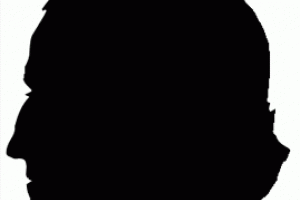Go To Section
YORK, Sir John (d.1569), of York and St. Stephen Walbrook, London.
Available from Boydell and Brewer
Constituency
Dates
Family and Education
3rd s. of John York by Katherine Patterdale. m. Anne, da. of Robert Smyth of London, 11s. inc. Peter 4da. Kntd. Oct. 1549.1
Offices Held
Assay master, Tower I mint 1544-5; under-treasurer, Southwark mint June 1545-51, Tower I mint 1551-2; master of King’s woods in southern parts by Aug. 1547-d.; Admiralty official by Feb. 1550-?3; j. p. Mdx. 1547; sheriff, London and Mdx. 1549-50; commr. sewers, Essex and Mdx. 1554.2
Biography
York’s family were merchants of the staple, trading in London and Calais, and maintaining connexions with their native city. By exploiting his position as a merchant trading abroad, York was able to render considerable service to the Crown by raising loans, manipulating the exchange, etc. His post in the mint may have been in recognition of these services, or he may have secured it through the patronage of the Earl of Warwick, with common interest in lands belonging to the former abbeys of Byland and Fountains. York undoubtedly supported the Henriclan position: in 1535 he condemned ‘the malicious intent of the Bishop of Rome’ and arrested a ‘lewd friar’ for delivering slanderous sermons. Certainly one who was a known follower of Warwick, who had been sheriff of London in 1549 and at whose house the Privy Council used to meet in the period preceding the arrest of the Duke of Somerset, would have held religious views acceptable to the protestant temper of the regime.3
As a mint official both at Southwark and the Tower, York was allowed to provide bullion at prices higher than those generally in force, and was thus able to make a personal profit. In 1551 he and Sir Nicholas Throckmorton handled the beginning of the restoration of the coinage and many of the coins then issued were stamped with Y, one of York’s mint marks. His conduct in his other offices was of less importance. His zeal in cutting down trees as master of the King’s woods earned him more than one rebuke from the Privy Council and his office in the Admiralty is known only because in February 1550 he was ordered to sell a consignment of prize sugar. His public service to an end with the death of Edward VI, but he had already lost his mint office. His advice on foreign coins was when the coinage was again being restored, but his association with Northumberland’s trade. In 1555 he became one of the 24 assistant of the newly-formed company of unknown lands, under the governorship of Sebastian Cabot.4
The reason for York’s seeking election to Parliament for the first time in t559 is unknown. Perhaps it was to lend support to the new protestant regime. Sir Ambrose Cave, chancellor of the duchy of Lancaster, presumably nominated him at Boroughbridge, perhaps at the instance of Sir Robert Dudley, in whose service one of his sons was in 1569.5
York next appears in Antwerp, in June 1560, buying gunpowder and saltpetre and earning the unfavourable attention of Sir Thomas Gresham, who was trying to monopolize the English trade in these commodities. In October of that year York proffered his advice on the projected re-coinage and on the manipulation of the exchanges to Sir William Cecil, but Cecil presumably felt that with Gresham’s services at his command he could ignore York. Concerning the remaining eight years of York’s life, little information survives. In January 1566, as a freeman of the Merchant Taylors’ Company, he contributed £6 13s.4d. toward the building of the Royal Exchange.6
York made his will in April 1561. He shared his lands, mainly in Yorkshire, among his sons. The East Riding property, at Heslerton, Peddelthorpe, Rudston, Sherburn and Sledmere went to younger sons, but the large estates concentrated in Craven and Nidderdale passed intact to his eldest surviving son Peter, A bequest of 1,000 marks was made to his daughter Jane, and the residue of his movable goods to his wife, the executrix. York died in January or February 1569 and was buried in the church of St. Stephen Walbrook, in which parish he had lived since 1546 when he had bought a house there from Sir Thomas Pope†.7
Ref Volumes: 1558-1603
Author: Irene Cassidy
Notes
- 1. Vis. Yorks. (Harl. Soc. xvi), 357-8; Vis. London, (Harl. Soc. i), 81; DNB.
- 2. J. Craig, The Mint, 112-13, 115, 116; LP Hen. VIII, xix(1), p. 493; xx(1), pp. 301, 529; Richardson, Ct. of Augmentations, 154, 155, 220, 305; APC, ii. 398-9; Excheq. K.R. Acc. Var. 302(27); Treasury, Misc. Var. 190 nos. 4, 5; CPR, 1547-8, p. 86; 1554-5, p. 108.
- 3. Clode, Early Hist. Merchant Taylors Co. i. 150; LP Hen. VIII, ix. p. 88; CPR, 1547-8, pp. 209, 234-5; APC, i. 551; ii. 337, 383-4, 388; iii. 84, 109, 219, 223, 312, 421; iv. 42.
- 4. The account of York’s mint career is based on information supplied by Dr. C. E. Challis; APC, ii, iii, iv, passim; CPR, 1547-8, p. 368; 1549-51, pp. 345, 348; 1550-3, p. 301; 1553-4, pp. 316, 411; 1554-5, pp. 56-7; CSP Dom. 1547-80, p. 30; Oman, Coinage of England, 259, 263-4, 266-7; Ruding, Coinage of Gt. Britain, i. 319.
- 5. CSP Dom. Add. 1566-79, p. 156.
- 6. CSP For. 1560-1, p. 119; Burgon, Gresham, i. 325; CSP Dom. 1547-80, p. 161; Clode, 228, 251.
- 7. PCC 4 Sheffelde; N. Country Wills (Surtees Soc. cxxi), 38-9; Reg. St. Stephen Walbrook (Harl. Soc. xlix), i. 80; J. G. White, Hist. Walbrook, 68-9.

